An extremely rare and finely enamelled famille-rose 'Phoenix' vase, seal mark and period of Qianlong
An extremely rare and finely enamelled famille-rose 'Phoenix' vase, seal mark and period of Qianlong. Estimate 8,000,000 — 12,000,000 HKD (907,788 - 1,361,683 EUR). Photo Sotheby's
of inverted pear shape, surmounted by a waisted neck and slightly rounded lip, the broad shoulder flanked by a pair of handles moulded in the form of butterflies suspending mock rings, the exterior vividly decorated in multi-coloured enamels with two pairs of confronting phoenix soaring amidst floral scrolls bearing curling leaves and tendrils, the neck decorated with a pair of bats, the detail picked out in shaded tones of yellow, pink, green, purple and blue against a white ground, all between a ruyi border and a lotus band encircling the mouth and foot respectively, the base inscribed in underglaze blue with a six-character seal mark; 27.5 cm., 10 3/4 in.
Provenance: The Art House, Inc., New York, 8th January 1921, lot 1202.
The Estate of John and Ann Hamilton, Houston, Texas.
Bibliography: Dana H. Carroll, Illustrated Catalogue of Antique Oriental Art Treasures Belonging to the Art House, Incorporated, New York, 1921, cat. no. 1202.
Catalogue image from Dana H. Carroll, Illustrated Catalogue of Antique Oriental Art Treasures Belonging to the Art House, Incorporated, New York, 1921, cat. no. 1202
Notes: The technical mastery of Qing craftsmen has been concentrated onto this delightful vase which captures the extravagance of the Qianlong Emperor. It is the counterpart to a vase from the Qing Court collection, and still in Beijing, illustrated in The Complete Collection of Treasures of the Palace Museum. Porcelains with Cloisonné Enamel Decoration and Famille Rose Decoration, Hong Kong, 1999, pl. 95 (fig. 1). The primary difference between the two vases is the lappet border around the foot, which is rendered pink in the Palace vase and blue on the present.
Famille-rose ‘phoenix’ vase, mark and period of Qianlong, Qing Court collection, Palace Museum, Beijing. After: The Complete Collection of Treasures of the Palace Museum. Porcelains with Cloisonné Enamel Decoration and Famille Rose Decoration, Hong Kong, 1999, pl. 95.
An air of exoticism has been created in this vase through the rococo-inspired curling leaves and the feathery pointed petals of the flowers. It incorporates Western painting techniques with traditional Chinese patterns and is a fine example of a successful synthesis of East and West. Painted with enamels from the yangcai (Western Colours) palette, ceramics expert Liao Pao Show of the National Palace Museum, Taipei, suggests it owes its existence to the taste of the Qianlong Emperor and to the achievements of Tang Ying, Superintendent at the Imperial Kilns at Jingdezhen. In 'On Yang-ts'ai Porcelains of the Ch'ien-lung Reign', from the National Palace Museum exhibition catalogue Stunning Decorative Porcelains from the Ch'ien-lung Reign, Taipei, 2008, Liao notes that the emperor was enamoured with his yangcai pieces and considered them to be representative of the technical innovation of his reign (see pp. 32-40). These enamels have been applied with remarkable precision and detail, evident in the carefully shaded floral blooms, archaistic phoenixes and bats, which have been endowed with added three-dimensionality through the fine use of the pointillist technique. For comparable examples of vases decorated with yangcai enamels see a large pair painted with Western-style flowers, from the National Palace museum, Taipei, included in the museum's exhibition op. cit., cat. no. 3, together with a square-form vase decorated with a flower scroll on a yellow ground, cat. no. 34.
The rarity of this vase also lies in the moulded butterfly handles. A favoured motif in Chinese decorative art for their auspicious representation of the wish for the accumulation of blessings, they frequently formed part of a decorative motif on porcelain. However, although ringed butterfly handles were popular on jade marriage bowls from the Qianlong period, porcelain examples are exceptionally uncommon. Exquisitely enamelled in subtle tones of green and yellow and detailed to a highly naturalistic degree in its veined and spotted wings, the butterflies enhance the novelty of the piece and perfectly compliment the floral design.
Sotheby's. Important Chinese Works of Art, Hong Kong, 07 avr. 2015

/https%3A%2F%2Fprofilepics.canalblog.com%2Fprofilepics%2F1%2F0%2F100183.jpg)
/https%3A%2F%2Fstorage.canalblog.com%2F03%2F02%2F119589%2F96711876_o.jpg)
/https%3A%2F%2Fstorage.canalblog.com%2F11%2F31%2F119589%2F94773502_o.jpg)
/https%3A%2F%2Fstorage.canalblog.com%2F20%2F83%2F119589%2F94772815_o.jpg)
/https%3A%2F%2Fstorage.canalblog.com%2F26%2F72%2F119589%2F75604929_o.jpg)
/https%3A%2F%2Fstorage.canalblog.com%2F59%2F60%2F119589%2F26458628_o.jpg)
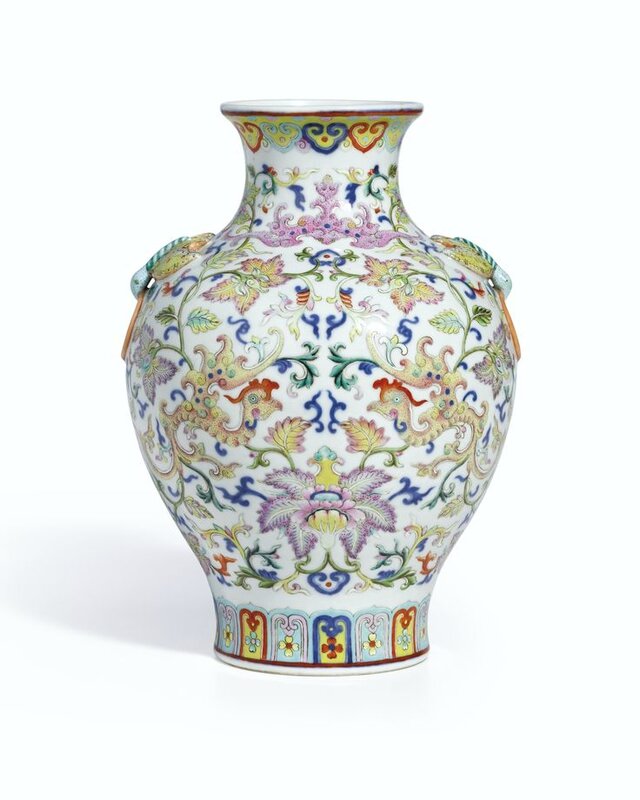
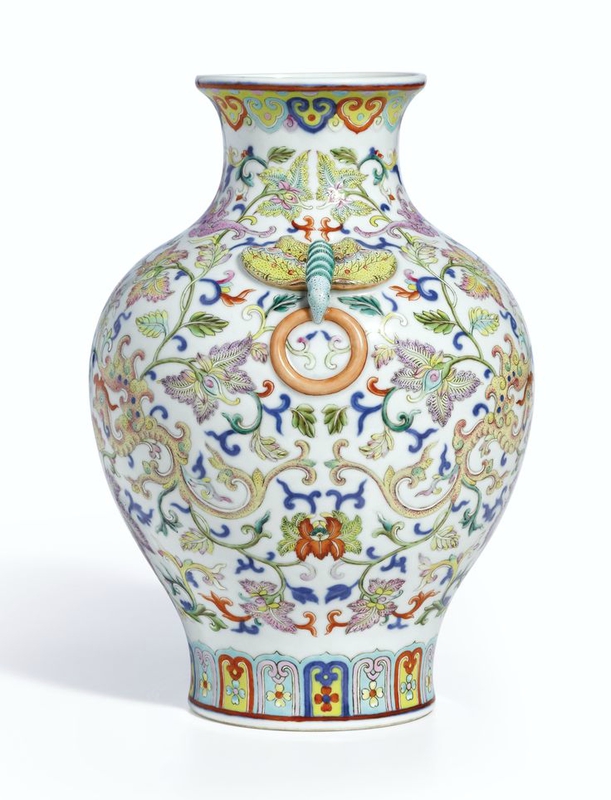
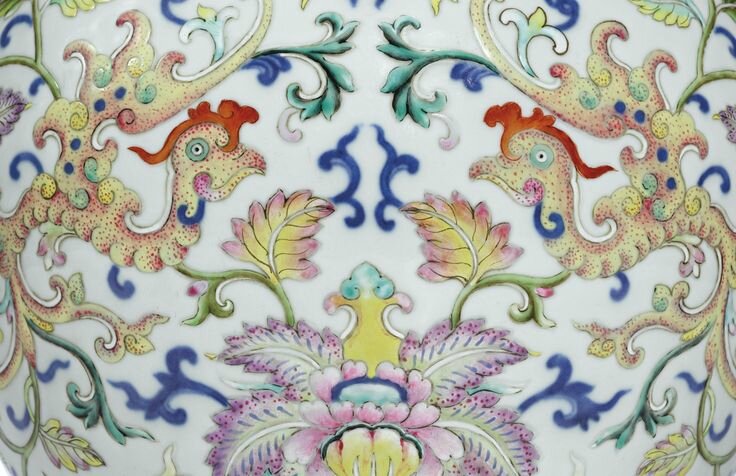

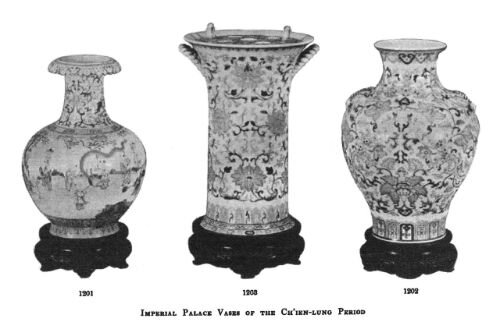
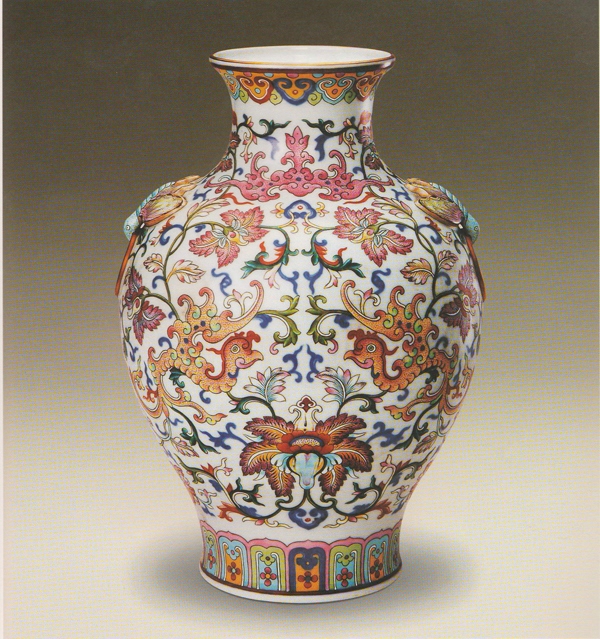


/http%3A%2F%2Fstorage.canalblog.com%2F14%2F63%2F119589%2F120976700_o.jpg)
/http%3A%2F%2Fstorage.canalblog.com%2F16%2F68%2F119589%2F117509711_o.jpg)
/http%3A%2F%2Fstorage.canalblog.com%2F22%2F13%2F119589%2F112910353_o.jpg)
/http%3A%2F%2Fstorage.canalblog.com%2F82%2F96%2F119589%2F112910170_o.jpg)